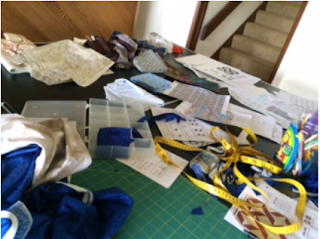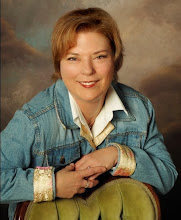 Everyone is creative: it is how you manage the process that makes the difference. The creative process is messy and chaotic, but a necessary part of creation. Talking with students of all ages, the one thing that stymies the project from getting started is how to begin, how to jump into it, organize it and see it through. I have a mantra I say to myself: trust the process.
Everyone is creative: it is how you manage the process that makes the difference. The creative process is messy and chaotic, but a necessary part of creation. Talking with students of all ages, the one thing that stymies the project from getting started is how to begin, how to jump into it, organize it and see it through. I have a mantra I say to myself: trust the process. We create in our waking and sleeping lives, using words and images to communicate. A thought is words put in order, to talk to oneself or another, to make a shopping list, cook a meal, get through the daily activities. Routines help us to corral the chaos into a manageable process, from the basics of learning ABCs, tying shoelaces, reading and writing to more sophisticated skills like driving a car, using a computer, and navigating the social and career spheres.
Sometimes it is easier to do than other times, when it seems that chaos reigns. I can compare the process with quilting. Some quilts go together simply, effortlessly, with minimal effort, like the Tardis Quilt, while others require revision after revision. The picture is a quilt I am working on for my daughter and her husband. I knew the theme would be a star quilt; I culled images from the internet and books I have in my library before I found the Friendship Star pattern I liked. Now what? He is a Taurus and she is a Virgo; the constellations map out beautifully for a quilt—but it has taken me over one hundred sketches to get the right layout—and then I have revised the colors and combinations five times before I was satisfied. My work space is perfect for doing large projects and I can keep organized as I am working. The theme came after I had bought the material, which was unusual for me, but nothing quite sounded right until snap! the thought Stars Falling Love, was just right. It is coming together, but slowly...the longest it has taken me to finish a quilt.
But during this process I had an insight into what is known as ‘writer’s block’, or that frustrating state when the project stalls out. I walked away from the sewing machine and sat outside on the deck stairs, thinking. I second-guessed every step, every completed star block, every color combination until I could no longer work on the quilt. Why is it not going smoothly? Why?Why?Why? Because, I want it to be perfect and all I can see is mistakes. Is it going to be beautiful like I envisioned? If it is not done, then I do not have to answer that question.
And so it goes with writing. My first book, Forcing the Hand of God, was first a series of inter-related short stories I had done for my master’s thesis. I was in a professional writer’s workshop, and had a wonderful, astute group of writers to critique my manuscript. That book was a learning process and I honed my skills as a writer, which took four years, from first draft to finished manuscript. My next project, KISS Keep It Short and Simple, was a compilation of notes that I had kept for various workshops I had given for beginning writers; it pretty much was a matter of organizing and filling in chapter headings before it went to the typographer, who added some absolutely amazing graphics that made the finished book charming. The first of the Bully Dog series, the story and characters of Bully Dogs, came holistically to me, and with the advent of the word processor and computer, was a week in the writing and two months in the revisions. The second book, YNK (You Never Know) took six months of conception, three weeks to write and two months of revisions before I let it go to print. The third book, A Penny in Time, actually was a stand alone story until I had written the other two and realized that Dusty belonged with Fran and her story fit with the series. The last book, Forever and a Day, has been a slog, but the first draft is done and awaits revision.
I do a lot of thought processing in writing stories, as you may have guessed from all this. Much of my time is spent back and forth, up and down and through hoops of what-if-this-then-that-will-it-work even before I type the title onto a page to begin my writing project. I make copious random notes, on characteristics, scenes, descriptions of clothing, hair color, likes/dislikes of the various persons and familial relationships—not all of the information necessarily makes it into the story line. I had one character that badgered me for over a year to write her story. Finally, I gave in and wrote the story—it is technically a perfect short story, but trite; I did not want to write about her because it had been done before by much better writers than I. When I get through the first five chapters of my new book, Eye of the Moon, which is set on a colonized planet in our solar system, this story will be an appropriate and pivotal chapter in the book.
Vision, envision, revision—imagination—reality—dreamscape; all a part of the chaos of creation. My advice is to trust yourself that you know what you know and by putting those thoughts into order, you can begin at the beginning and get to the end of a project. As in quilting and writing, an organized workspace is vital to contain chaos; break down the project into manageable components. In quilting, it is the block pattern, for writing it is one sentence after another, one paragraph then another. In writing, compare, contrast and inter-relate ideas, as you would in any project, from a grocery list to an essay. The very action of beginning with a pencil, or a blank document, takes that idea and makes it concrete. From imagining it to visualizing it to producing it, trust the creative process that from chaos comes creation. It will take time, it will take effort, it will, in the end, be beautiful.




No comments:
Post a Comment